3 Best Project Management Tools to Automate Sprint Backlog Grooming
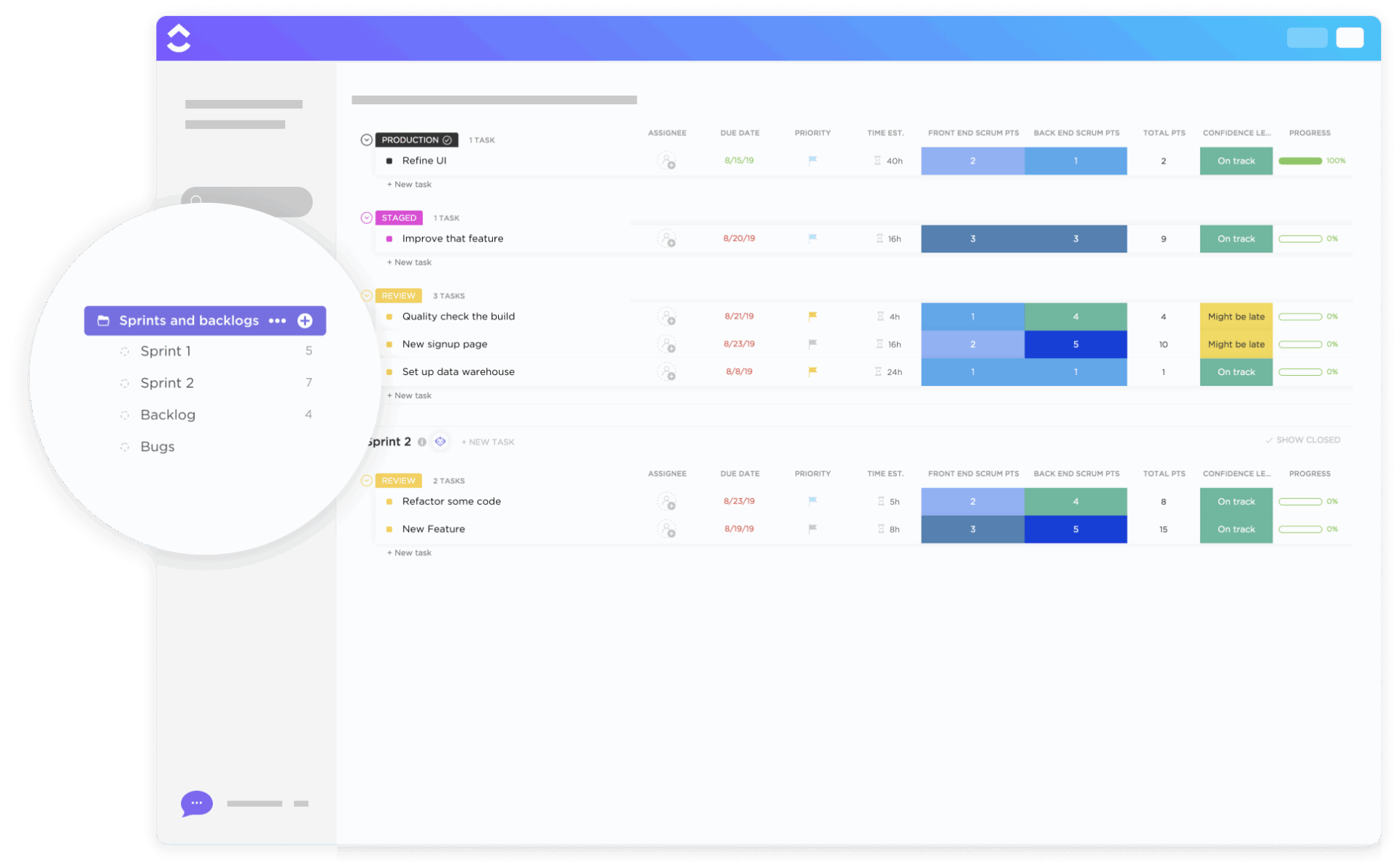
Sorry, there were no results found for “”
Sorry, there were no results found for “”
Sorry, there were no results found for “”

You know that moment in every sprint planning session when the team collectively groans at the messy backlog? Somehow, that one bug from three sprints ago is still lurking at the bottom like a forgotten to-do ghost.
Sprint backlog grooming shouldn’t feel like herding cats in a thunderstorm. But when you’re juggling dozens of tasks and trying to keep devs, designers, and stakeholders on the same page, chaos sneaks in fast (despite using the best agile methodologies)!
This is where the use of project management software to automate sprint backlog grooming becomes crucial. In this article, we will look at the best backlog management tools for modern product development teams.
We will also explore how automation helps agile teams maintain healthy sprints, manage their backlogs effectively, and keep sprint goals within reach.
👀Fun Fact: Back in 1993, the first real Scrum team launched at Easel Corporation, and they reached astonishing productivity by using early XP engineering practices alongside Scrum habits.
Here’s a quick comparison of the top project management automation tools for sprint backlog grooming to help you choose the right fit based on a few key features, additional features, pricing, and user ratings.
| Tool | Best for | Key features | Pricing* | Ratings |
| ClickUp | All-in-one agile project management software tool with AI-powered backlog grooming Team size: All sizes, from freelancers and small teams to enterprises | ClickUp Brain for AI-assisted prioritization, ClickUp Automations for sprint templates, AI-powered agents to share daily/weekly reports, ClickUp Custom Status for backlog flow, ClickUp Integrations with GitHub/GitLab/Jira, Backlogs & Sprints Template | Free plan available; Custom pricing available for enterprises | G2: 4.7/5 (9,000+ reviews) Capterra: 4.6/5 (4,000+ reviews) |
| Jira | Agile backlog management and sprint tracking Team size: Mid-size to enterprise tech teams | Create and organize user stories, Scrum & Kanban boards, burndown and velocity charts, built-in automation rules, dashboards for resource allocation, integrations with Confluence, GitHub, Slack, and Teams | Free; Starting from $7.53/month per user | G2: 4.3/5 (6,600+ reviews) Capterra: 4.4/5 (15,200+ reviews) |
| Trello | Visual sprint boards and simple backlog grooming Team size: Small to medium teams, freelancers, or non-technical teams | Drag-and-drop Scrum/Kanban boards, labels, and checklists. Butler automation, dashboard & timeline views, Power-Ups for Slack, Google Drive, Jira, story point estimation with Planning Poker | Free; Starting from $5/month per user | G2: 4.4/5 (13,700+ reviews) Capterra: 4.5/5 (23,600+ reviews) |
Our editorial team follows a transparent, research-backed, and vendor-neutral process, so you can trust that our recommendations are based on real product value.
Here’s a detailed rundown of how we review software at ClickUp.
Sprint backlog grooming, sometimes called backlog refinement, is about looking at what is in the product backlog, tidying up what no longer matters, and making sure the most important items are ready for the next sprint.
When grooming is done well, it saves everyone from the stress of facing a messy, never-ending list.
Instead, the team can walk into sprint planning with clarity, knowing which user stories are ready, which ones need more detail, and which can be set aside for later.
Product backlog management tools also give space for new ideas or customer needs to be added at the right time.
📌 Example: Picture a small team of developers preparing for their weekly sprint. Instead of wading through dozens of half-finished ideas, they take an hour to refine their backlog together. By the end, their sprint backlog feels light, clear, and doable, leaving them free to focus on the work they actually enjoy.
A backlog outside of the sprint should always be moving. Usually prioritized some time before the next sprint plan. If you mean items inside of a sprint, then if there are openings for something, then sure, but this is a flag of something; handling a bunch of bugs is a flag of something, and reacting to new ideas.
This little insight from a Reddit user sums it up beautifully.
A backlog is always shifting. New ideas show up, bugs demand attention, and priorities change faster than we expect. That constant movement is what makes grooming feel like a never-ending chore.
It is also why a little help from automation can make the whole process lighter and less draining.
So, if you’re looking for reasons to automate sprint backlog grooming, look no further:
👀 Fun Fact: Google Ventures developed the 5‑day Design Sprint to help teams land on the right solution fast—they move from idea to prototype and user-tested feedback before committing to building. Software development teams at Airbnb, Dropbox, LEGO, the United Nations, and others have utilized it.
Don’t look for a long feature list when choosing software for backlog grooming. Your focus should be on finding something that feels natural for your team, helps reduce the everyday stress of backlog work, and gives everyone a clear view of what comes next.
The best tools should make sprint planning feel lighter, not heavier. And here’s how you can identify them:
✅ Keeps backlog items easy to review, refine, and break into smaller user stories so they are ready when the team needs them
✅ Offers customizable boards and workflows that adjust to the way your team actually works
✅ Connects smoothly with communication platforms and development tools so everyone can collaborate without switching back and forth
✅ Shows progress in ways that are easy to understand, from burndown charts to simple reports that keep the whole team aligned
✅ Takes care of repetitive tasks in the background, like backlog updates and sprint reminders, so the team can focus on meaningful work
📮 ClickUp Insight: 88% of people in our survey said they use AI tools for personal tasks daily, and more than half tap into them several times a day. But what happens when that same power comes to work?
With one AI at the center of your project management, knowledge sharing, and collaboration, teams can save over 3 hours a week that would otherwise be lost searching for information—just like 60% of ClickUp users already do.
For those moments when backlog grooming gets overwhelming, here are three tools that quietly take care of the repetitive work.
Backlog grooming is one of those tasks that everyone knows is important, but few actually look forward to. ClickUp turns that around by weaving automation and AI into the process.
It is the world’s first Converged AI Workspace, bringing together all work apps, data, and workflows. ClickUp eliminates all forms of Work Sprawl to provide 100% context and a single place for humans and agents to work, together.
So instead of endless sorting and debating, your sprint backlog becomes a living, manageable space with ClickUp. Here’s how:
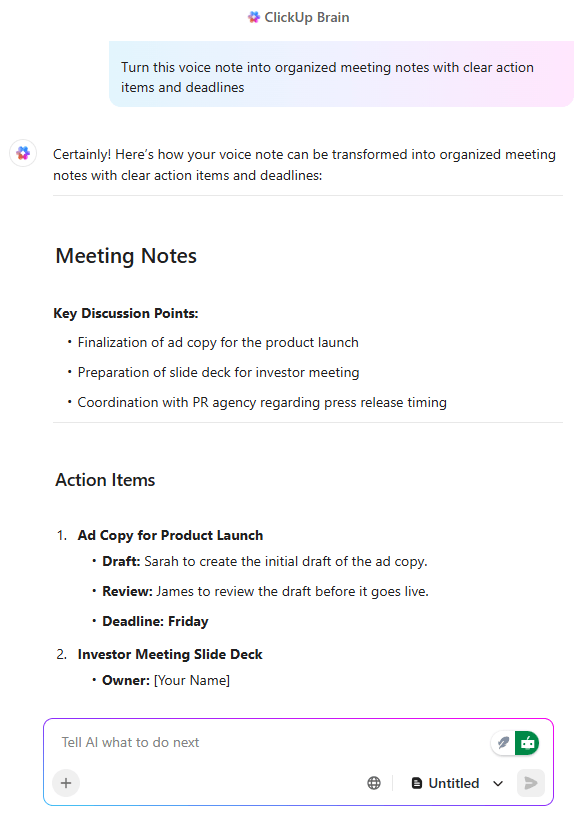
ClickUp Brain looks at your backlog the way an experienced Scrum Master might: spotting patterns, noticing risks, and nudging the team toward high-value work.
It doesn’t just sort items by deadlines—it considers dependencies, workload, and even the history of similar tasks.
📌 Example: A product manager faces a backlog of 120 user stories, feature requests, and bug reports. Instead of manually moving cards around, they use ClickUp Brain to rank them. The AI highlights that a small bug, if ignored, will block two major user stories in the next sprint. It also suggests delaying a low-priority feature that duplicates existing functionality. What used to take hours of guesswork is now a 10-minute review and confirmation.
Ultimately, ClickUp Brain cuts down that back-and-forth by analyzing similar tasks from past sprints and suggesting reasonable estimates.
💡 Bonus: For users looking to go beyond a Chrome extension, ClickUp Brain MAX is the perfect desktop AI super app.

For example, before a grooming session, you could ask Brain MAX to show you all tasks in the backlog that reference a specific feature requested by customers, find any open bugs related to that feature, or fetch design assets tied to those tasks—so you walk into refinement already armed with context and content.
You can set up ClickUp AI Agents to keep your backlog clean and sprint-ready. These agents can be customized to watch for specific conditions, perform actions automatically, and surface relevant insights before your team even opens the board.

Example AI Agent setup for sprint backlog grooming:
Agent Name: Sprint grooming prep agent
Trigger: When a task is added to the backlog or hasn’t been updated in 14 days
Actions:
This AI Agent ensures your team always walks into grooming sessions with a pre-filtered, well-organized list of tasks that are ready for discussion.
🎥 Meet your new teammate! Watch the video below to learn how to set up your first AI agent:
Agile prioritization techniques thrive on rhythm, but setting up sprints manually each time can break that rhythm.
ClickUp Automations streamline sprint backlog grooming by automating repetitive tasks and keeping your backlog organized. Set up triggers like “when a task is added to the backlog” and actions like “assign owner” or “set status to Needs Review” to manage tasks efficiently. This helps prevent stale or unclear items from piling up and reduces manual cleanup.
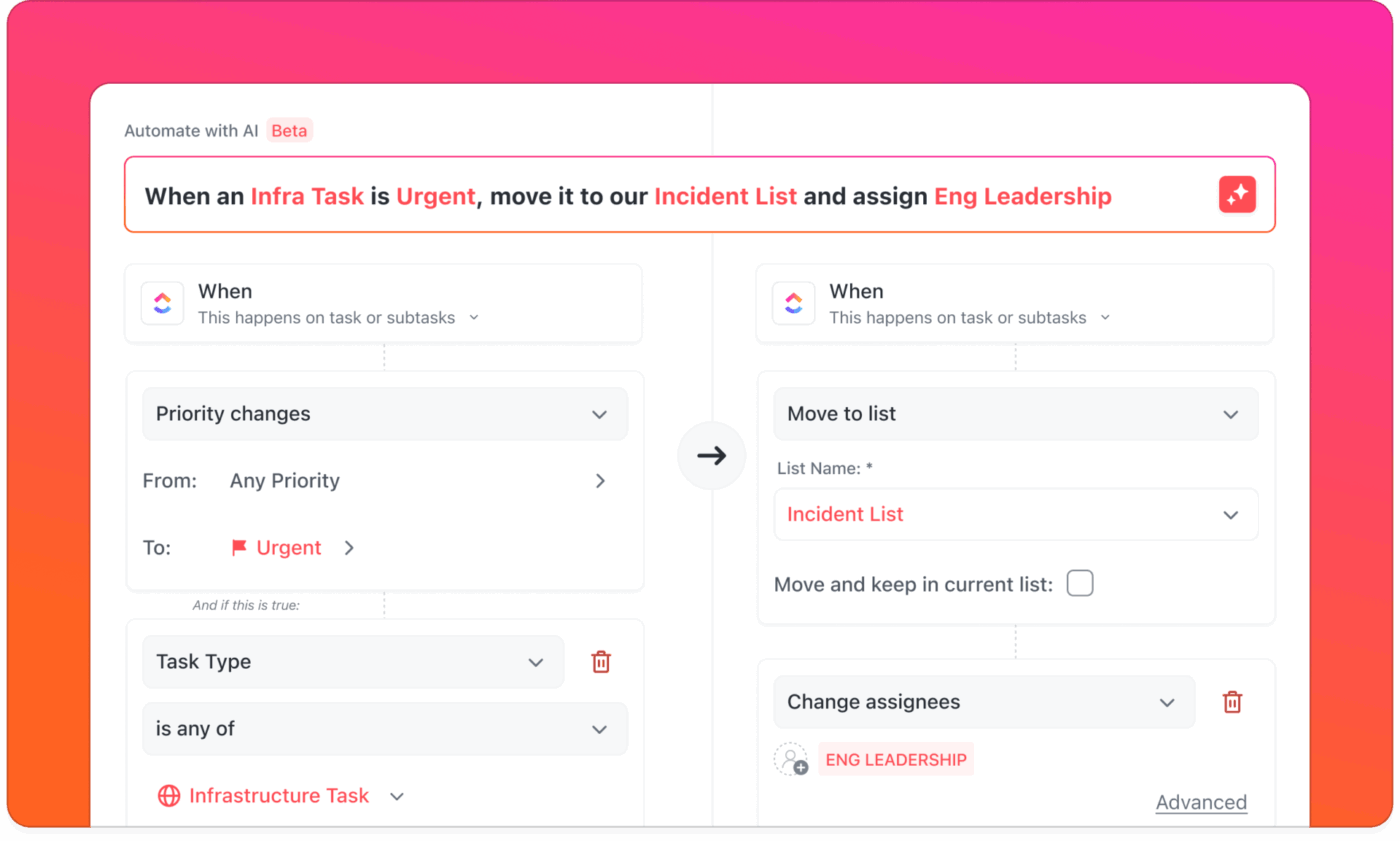
Here’s what automations can specifically do during sprint backlog grooming:
Custom statuses for backlog items with ClickUp Custom Status

One of the most overlooked parts of backlog grooming is clarity. Backlog items often get stuck in limbo—too detailed to be ignored, but not ready for development. ClickUp Custom Status solves this by letting teams create their own statuses that reflect the true state of work.
📌 Example: A distributed development team builds a status flow that goes like this: “Idea Logged → Needs Triage → Ready for Grooming → Needs Estimation → Ready for Sprint → Blocked.”
During backlog grooming sessions, they use these statuses to guide discussions. Everyone can instantly see which items still need refinement, which ones are sprint-ready, and which are stalled. This prevents grooming meetings from becoming aimless debates and keeps the sprint backlog moving forward.
📚 Bonus: ClickUp Dashboards give you a bird’s‑eye view of backlog health. They show key metrics like how many tasks lack estimates, are unassigned, or have been sitting untouched for too long.
You can bring in widgets like velocity charts, burndown/burnup graphs, and team workload views so you immediately see bottlenecks or capacity issues without digging through lists.
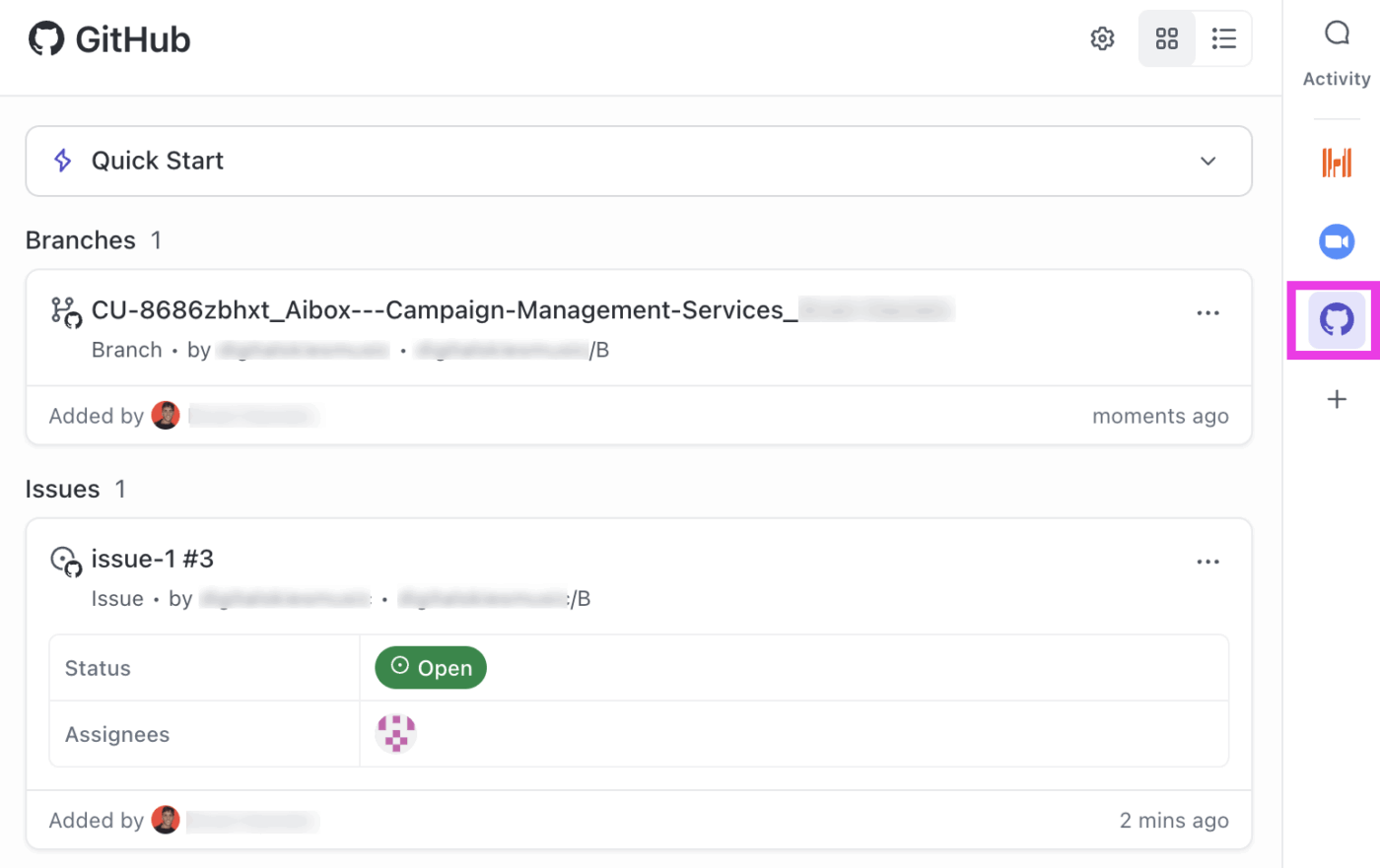
Backlog grooming doesn’t happen in isolation. For development teams, code commits, pull requests, and bug reports all affect the backlog.
ClickUp Integrates with GitHub, GitLab, and Jira ensure that updates in those systems are automatically fed into backlog items.
📌 Example: A developer merges a pull request in GitHub linked to a backlog item in ClickUp. As soon as the PR closes, ClickUp Integrations updates the task status to “Done,” adds a note with the commit ID, and notifies QA. This means the QA team doesn’t waste time chasing updates, and product managers always see an up-to-date picture of sprint progress without needing to cross-check tools.
📖 Also Read: Agile Capacity Planning
ClickUp’s Backlogs and Sprints Template gives scrum teams a clear structure for sprint planning while keeping backlog management simple and consistent.
Here’s what you can get out of agile templates like this one:
Finally, the ClickUp Agile Sprint Planning Template comes pre-built with custom views like Sprint Backlog Items and Development Status, giving your team full visibility into sprint progress. This free sprint planning template includes tailored fields such as Development Status, Epics, and Remaining Hours to make your planning seamless.
This G2 review noted:
Features like Automations, the AI writing assistant, and the revamped Calendar are real time-savers. And the best part? It scales with us—whether we’re launching a new campaign or managing long-term operations.
⚙️ Friendly tip: Here’s a sample workflow with Brain MAX for backlog grooming
📖 Also Read: Free Resource Planning Templates in Excel & ClickUp
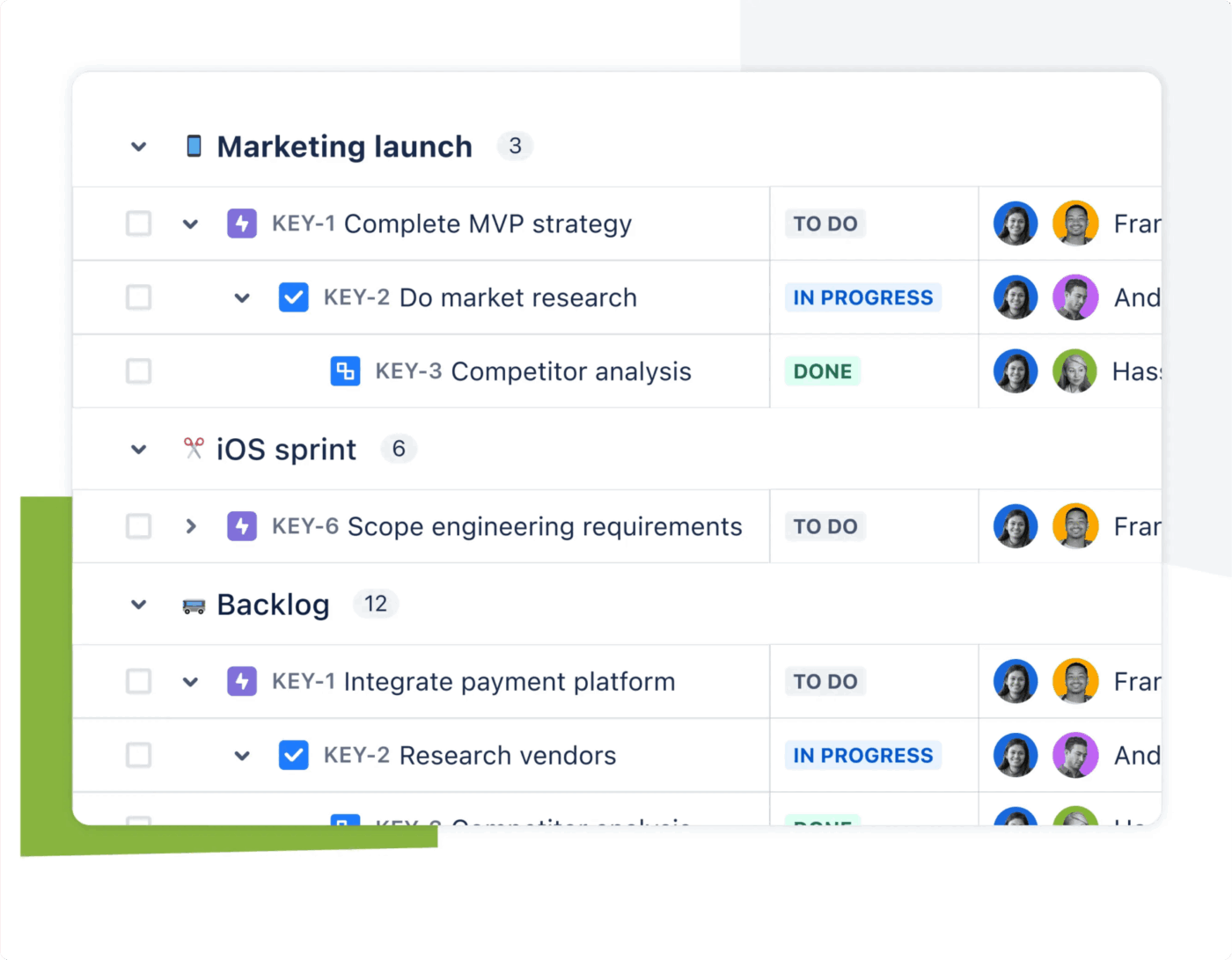
Jira helps streamline sprint backlog grooming by offering structured boards where product owners can view, prioritize, and edit backlog items. With features like drag-and-drop prioritization, story point estimation, and custom filters, dev teams can organize tasks by urgency, sprint, or issue type.
Additionally, Jira supports grooming with integrations like Confluence for documentation and Bitbucket for dev context, all visible within a single issue. You can set up custom workflows and use Jira’s automation to flag stale tickets or transition stories based on grooming status.
Engineering managers can also use velocity charts and sprint reports to evaluate whether backlog items are appropriately sized, prioritized, and progressing.
This G2 review featured:
Jira can do pretty much anything you want when it comes to project management (tickets, backlogs, sprint plannings, burndown charts, productivity metrics, you name it).
Did you know? Engineers and product managers at ClickUp plan epics in ClickUp to prioritize work, improve visibility, and collaborate on sprints. Here’s how they do it:
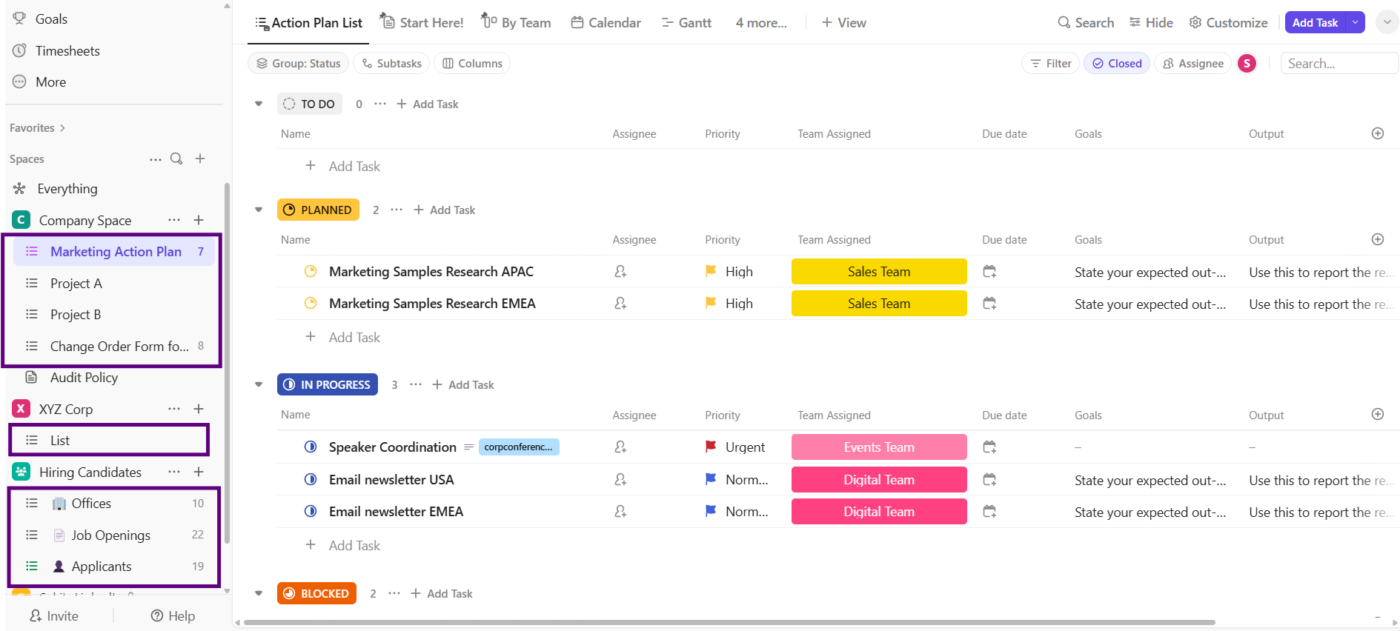
Curious how to run sprints easily for your team? Watch this video to learn more:

There’s something satisfying about seeing work move from “To Do” to “Done.” That little sense of progress keeps teams motivated, and Trello captures that feeling.
With Trello’s visual boards, you can neatly organize backlog items into lists like “To Groom,” “In Review,” or “Ready for Sprint.” Each card becomes a dynamic workspace—add checklists, estimates, attachments, and labels to clarify what’s ready and what needs work.
Trello’s Butler automation takes things further by moving cards, assigning tasks, or tagging items based on preset rules. With Power-Ups like Custom Fields and Card Aging, you can surface missing estimates or spot neglected tasks before they create sprint debt.
This G2 review highlighted:
What I love about Trello is how simple it is to use and how visual everything is. I’m the type of person who likes to see everything laid out clearly, and Trello does that perfectly. The boards and cards let me organize my tasks exactly how I want to, and it’s super easy to assign things and track progress.
📖 Also Read: How to Set an Effective Sprint Schedule
Not every team needs the same level of complexity in their sprint backlog tools, and that’s where options like Zenhub and Azure DevOps come into play.

Zenhub is especially handy if your development work already lives in GitHub. It integrates backlog management and sprint planning directly into your repos, ensuring that your product backlog and sprint backlog always reflect the actual code being shipped.
Backlog grooming becomes less about guesswork and more about tracking progress as it unfolds, thanks to features like burndown charts and real-time updates tied directly to commits.
On the other hand, Azure DevOps caters to teams seeking a comprehensive solution.
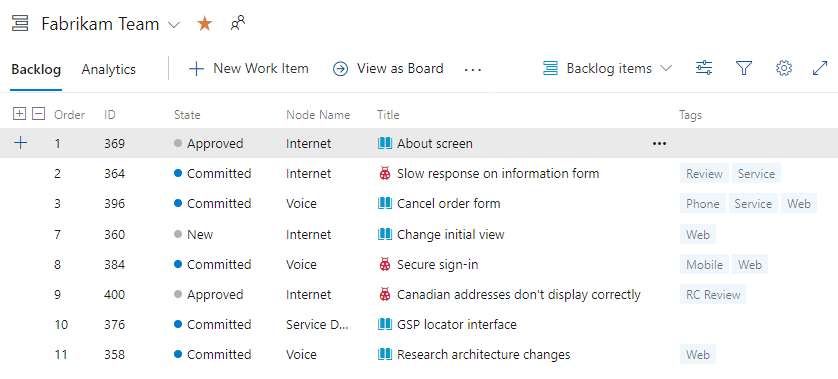
Azure DevOps caters to teams seeking a comprehensive solution. With Azure Boards, you can break down user stories into backlog items, map them to features or epics, and manage sprint backlogs across multiple teams.
Its strength lies in scale: Whether you’re a small agile squad or an enterprise handling complex projects, Azure DevOps gives you the ability to connect backlog grooming directly to releases
👀Fun Fact: The term “Scrum” comes from a 1986 Harvard Business Review paper, where authors compared product development to a rugby team moving across the field together—reflecting teamwork, flow, and adaptability.
📖 Also Read: Trello vs. ClickUp
When teams already know the value of sprints, the question becomes less about why and more about how to keep them sustainable. This is where automation proves its worth. It removes the grind of backlog grooming and frees up space for strategy, creativity, and problem-solving.
Here are a few things to keep in mind when considering the benefits of project management software for backlog grooming automation and what you can do with it:
Backlogs will always be part of agile work, but it doesn’t have to feel like a weight that slows the team down. With the right tools, grooming becomes less about wrestling with tasks and more about guiding the team toward clear, meaningful progress.
Among the options out there, ClickUp stands out because it doesn’t just organize your backlog—it actively helps you refine it.
With ClickUp Brain providing smarter prioritization, automations that save time, and integrations that connect the entire workflow, ClickUp feels less like just another tool and more like a teammate that keeps you on track.
If you’re ready to give your backlog the structure it deserves and your team the clarity it needs, sign up for ClickUp for free today.
Backlog grooming is an ongoing process where the product owner and team review, prioritize, update, and clarify items in the product backlog. The goal is to ensure the backlog is clean, organized, and ready for upcoming sprints. This includes breaking down large items (epics) into user stories, estimating effort, removing outdated tasks, and refining acceptance criteria.
Sprint planning, on the other hand, happens at the beginning of each sprint. During this meeting, the team selects a set of well-groomed backlog items to work on during the sprint, based on capacity and sprint goals. It’s a commitment session where the team defines what will be delivered and how it will be achieved.
The 20/30/50 rule is a simple way to keep priorities balanced. About 20% of the backlog should be high-value, must-do items; 30% medium-priority work that adds steady progress; and 50% lower-priority or nice-to-have tasks.
The goal of the 20/30/50 rule is to maintain a healthy product backlog that balances innovation, user satisfaction, and technical stability—rather than being dominated by one area (like just bugs or just new features). It’s a guideline, not a strict rule, and should be adjusted based on product maturity, team velocity, and business goals.
Backlog grooming is a team activity. The product owner usually leads, but developers, the QA team, and sometimes even senior stakeholders join in. Everyone brings their perspective, which makes the backlog more accurate and realistic.
The three main activities in product backlog grooming are:
1. Reviewing and prioritizing: Organizing backlog items based on value, urgency, or dependencies to ensure the most important work is addressed first
2. Clarifying requirements: Ensuring each item has clear descriptions, acceptance criteria, and is broken down into manageable tasks if needed
3. Estimating effort: Collaborating with the team to assign story points or estimates, helping plan upcoming sprints more accurately.
Most teams groom their backlog once every sprint, though some prefer shorter, more frequent sessions. The key is consistency—keeping the backlog updated regularly so it never becomes overwhelming.
Yes, AI can be surprisingly helpful. It can look at past work patterns, dependencies, and even team capacity to suggest which tasks should come first. This doesn’t replace team judgment, but it does take some of the weight off endless prioritization debates.
Yes, ClickUp integrates with Jira, allowing teams to link tasks and sync updates between the two platforms. You can import from Jira or use one of our Jira integrations to improve your productivity:
1. Jira Connected Search integration: If you need real-time visibility to search for and preview Jira projects, boards, dashboards, and issues in ClickUp
2. Jira Sync integration: Sync all project and issue updates between ClickUp and Jira, so you don’t have to leave ClickUp to see and manage your work
© 2025 ClickUp